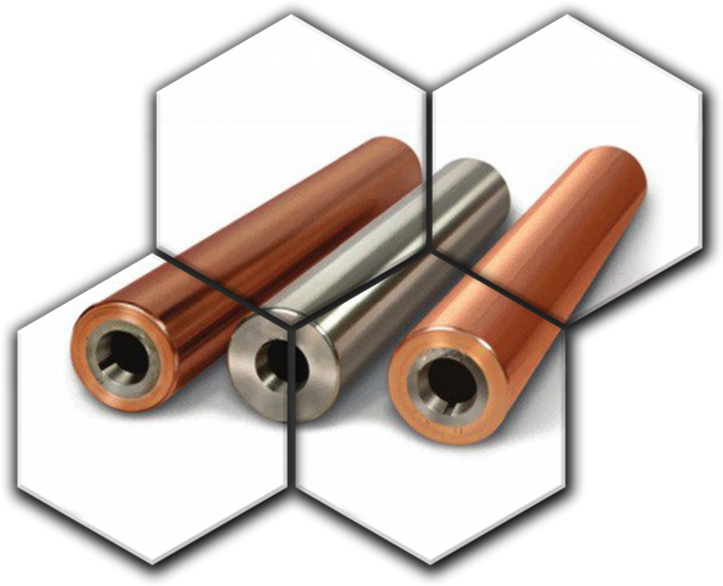GRAVURE SLEEVE CYLINDER

A gravure printing sleeve cylinder is the engraved image carrier used in gravure printing and typically comprises of a steel cylinder base or underlying metal structure that supports the engraved image-carrying layer. The base cylinder needs to be fitted with shafts prior to installation into the press.
USES
Magazines, newspapers, catalogs, wallpaper & various types of packaging.
APPLICATION
- Publication printing for magazines, newspapers, add inserts, catalogues.
- Other substrates such as gift wrapping, wallpaper, postage stamps, thin film, nylon, etc
- Packaging printing, including polyethylene, polypropylene, polyester, laminates for furniture, vinyl, BOPP.
MANUFACTURING PROCESS
- Steel gravure cylinder bases are first lightly plated either with copper in a cyanide bath or with nickel.
- Each cylinder is then transferred to an acid copper sulphate bath and grown to the appropriate size.
- Close control of the production process of a good cylinder allows for a very exact engraving surface for optimal image quality and cell wall integrity.
- Once engraving has been completed, a chrome layer is added reservedthe engraver before polishing stones are used to compensate for any plating inaccuracies.
TECHNICAL PARAMETERS
Base Material: Steel welding pipe/seamless steel tube
Plating Material: Engravable Copper, then chrome
Surface hardness: HRC50
Roughness: ≤ Ra 0.16
Dimensions: 100 – 400mm
Length: 320-IB00mm (Normally 50mm longer than a rubber roller)
Thermal deformation: ≤ 0.0Imm
Concentricity: 0-15 microns
Straightness: ≤ 0.2mm
ADVANTAGES
- VARIABLE: Wall thickness provides greater variability in diameter than thin-film technology.
- DURABLE: Easily electroplated, each cylinder can withstand increased printing pressure, and large-volume print runs without a cell wall breakdowns.
- QUALITY: The copper image-carrying layer provides the highest degree of structural and functional integrity and ensures a more consistent print quality.
- CONSISTENCY: Colour laydown and image rendering quality remain stable.
- VERSATILITY: Image data can be continuous, providing a seamless print run, and allows for printing of a wide variety of porous or non -porous flexible substrates.
- INK: Depth and size of engraved cells allow for more ink laydown compared to others processes.
DISADVANTAGES
- The varying shafts used during different stages of the production-engraving, plating, and printing-can create inaccuracies in the engraved image and the printed image.
- As gravure printing requires one cylinder per color, it is expensive for short runs.
